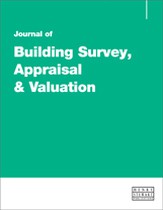Rights of light: Time for a change?
Abstract
The Law Commission's recent consultation paper on rights to light put forward a number of proposals aimed at managing the problems highlighted in Heaney including: the abolition of prescription (for new rights only); reform of the Shelfer test governing when damages are awarded in substitution for an injunction; and the introduction of a new Notice of Proposed Obstruction (NPO) procedure. Whereas it is anticipated prescription will remain ‘as is’, there is genuine hope that the Shelfer reforms will materialise — including the consideration of a claimant's unreasonable delay in bringing proceedings — balancing the parties’ negotiating power. The NPO's prescribed time limits for neighbours to seek an injunction should also serve to expedite negotiations. The proposals, if accepted and implemented, would go a good way to addressing the inherent uncertainty faced by developers in rights to light cases, while balancing and respecting adjacent owners’ interests. In the absence of any proposal to impose a cap on damages, however, settlements (which can be huge) on a profit-share basis may still be awarded. Could it be, however, that a neighbour electing not to seek an injunction will find their damages quantum reduced? Only time will tell.
The full article is available to subscribers to the journal.
Author's Biography
Ian Mckenna is a partner at Malcolm Hollis and head of the Rights of Light and Daylight & Sunlight service. He is a specialist in these disciplines with over 15 years’ experience. He acts for both developers and adjoining owners across the UK to identify issues, manage modelling and testing processes, provide remedial advice and negotiate commercial resolutions. He lectures widely on the subject and represented the BPF during its consultation with the Law Commission on rights of light law reform.
Citation
Mckenna, Ian (2013, October 1). Rights of light: Time for a change?. In the Journal of Building Survey, Appraisal & Valuation, Volume 2, Issue 3. https://doi.org/10.69554/MPRN4978.Publications LLP
